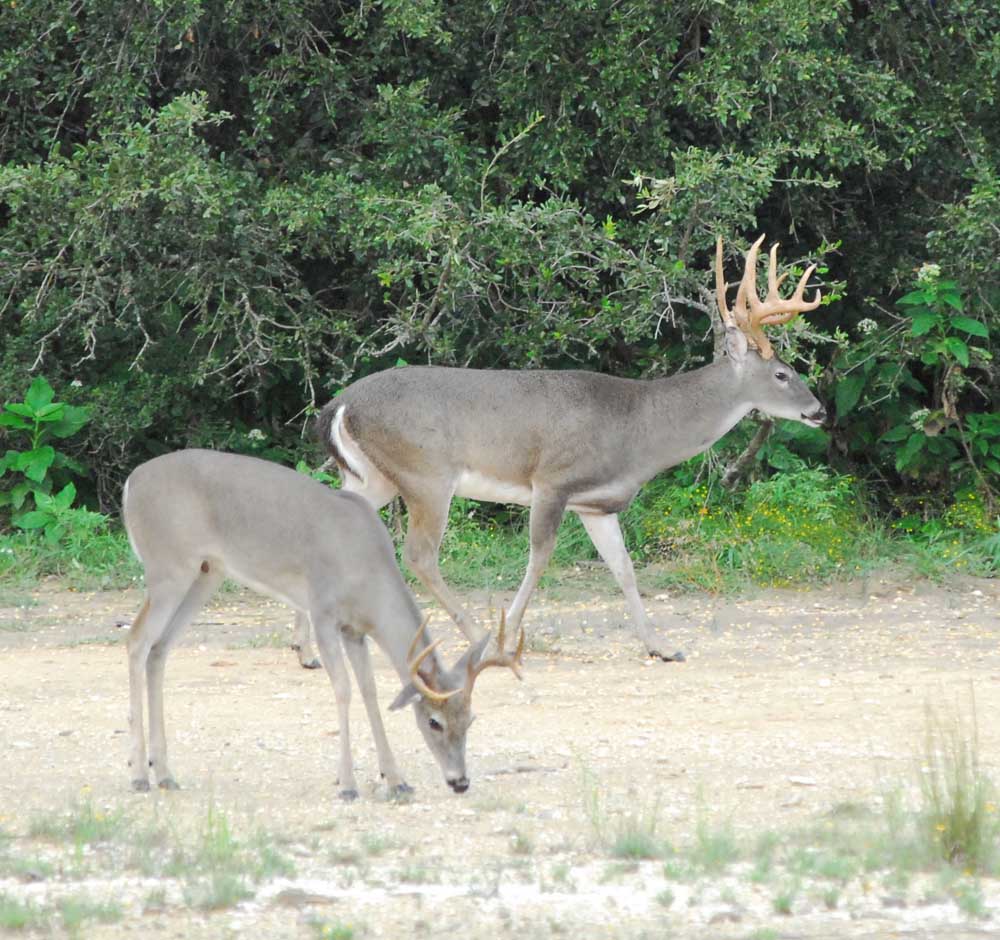A simple view of why deer hunters do what they do
Published 10:44 pm Thursday, January 10, 2019

- For hunters interested in managing a deer herd, it requires knowing which bucks to take and it requires a steady harvest of does. (Steve Knight/Staff)
I realize deer season is over for most Texans, but I wanted to talk about something before I forget. Call it getting a head start on next season or a conversation point during the offseason.
I was recently asked about deer hunting by a friend who is a non-hunter. The question was what deer did we shoot. I knew immediately where this was going, and sure enough I was asked whether hunters shoot does or not.
Trending
As hunters understand, my answer was an unapologetic yes. I realize most people who will read this are hunters, so I am preaching to the choir, but maybe a few non-hunters will see it and have a better understanding of the role of hunters as herd managers.
When ranchers see poor range conditions, their first move is to remove cattle, sheep or goats and send them to the sale barn either going to a ranch with better conditions or to slaughter.
That is not an option for wildlife. In fact, the best option is to never let a population become greater than the habitat can handle, or hurry to catch and reduce the population with the gun. The explanation of why this is necessary is really pretty simple. It is my single hamburger philosophy.
Let’s start by saying I am going to give you a hamburger and fries for every day of the year. Through the magic of imagination, you get all of your hamburgers and fries at one time. Chances are you are going to eat some everyday, but on cold days you may eat two, maybe even three, to maintain energy. That is going to make it difficult but not impossible.
But say you have a friend and the only food available is your burgers and fries. Either you are kind and share or they get desperate and steal some of yours. Either way there is no way there will be enough food to last. At the end of the year both of you might survive, but you are going to lose weight and not be in good health.
What about a situation where the conditions in the neighborhood are so bad you suddenly have five, 10, maybe even more wanting to share your rations. There is not enough food for one, so the battle begins with the strongest bullying the weaker and taking their share. The food runs out quicker. Those getting the least food are the first to decline, and the drop-off is so great they become emaciated to the point of no return.
Trending
This is what happens in the wildlife kingdom. In the case of deer, it begins in late summer when food sources are slim because of Texas’ summer heat. It happens again in the winter because there are too many deer feeding on a limited amount of food, or the weather turns so bad it makes those food options inedible.
The thing to remember with white-tailed deer is that whatever is green is not necessarily food. Because of its physiology, a deer’s diet is not like a cow or goat. It cannot just put its head down and feed its way across a grass pasture.
Hunters know that once a doe turns 2 1/2, she will typically have twin fawns — a male and a female each year. As many as a fifth of the doe population will have triplets in some areas when conditions are excellent. How many of those survive depends again on range conditions.
Studies have shown that in non-hunted populations, there is often more does than bucks. That may be a result of a doe living an easier life without all the fighting and chasing that bucks do.
Since deer are not monogamous, that means there is really only one way to control numbers beyond letting them starve and that is to take a portion of the doe population.
Then a cycle begins. The more deer taken, the better the range conditions will be because there are less deer sharing the available food. The better the condition, the better the fawn class survival, which ultimately means without continued effort the population can quickly become out of control once again.
Natural mortality plays a role, but does not solve the problem because nature has a way of over-compensating to protect the population. Neither does supplemental feed unless you have really deep pockets.
Texas hunters annually kill between 700,000 and a million deer. During the 2017-18 season, about 55 percent of the 900,000-plus deer taken were bucks. That was partially because some hunters or landowners do not like to shoot does and in some cases regulations makes doe harvest difficult.
At the same time, the population is on a steady increase. Going into this season, it was an estimated 3.6 million.
So based on the hamburger and fries theory, the best thing for herd health is the harvest of both bucks and does.






